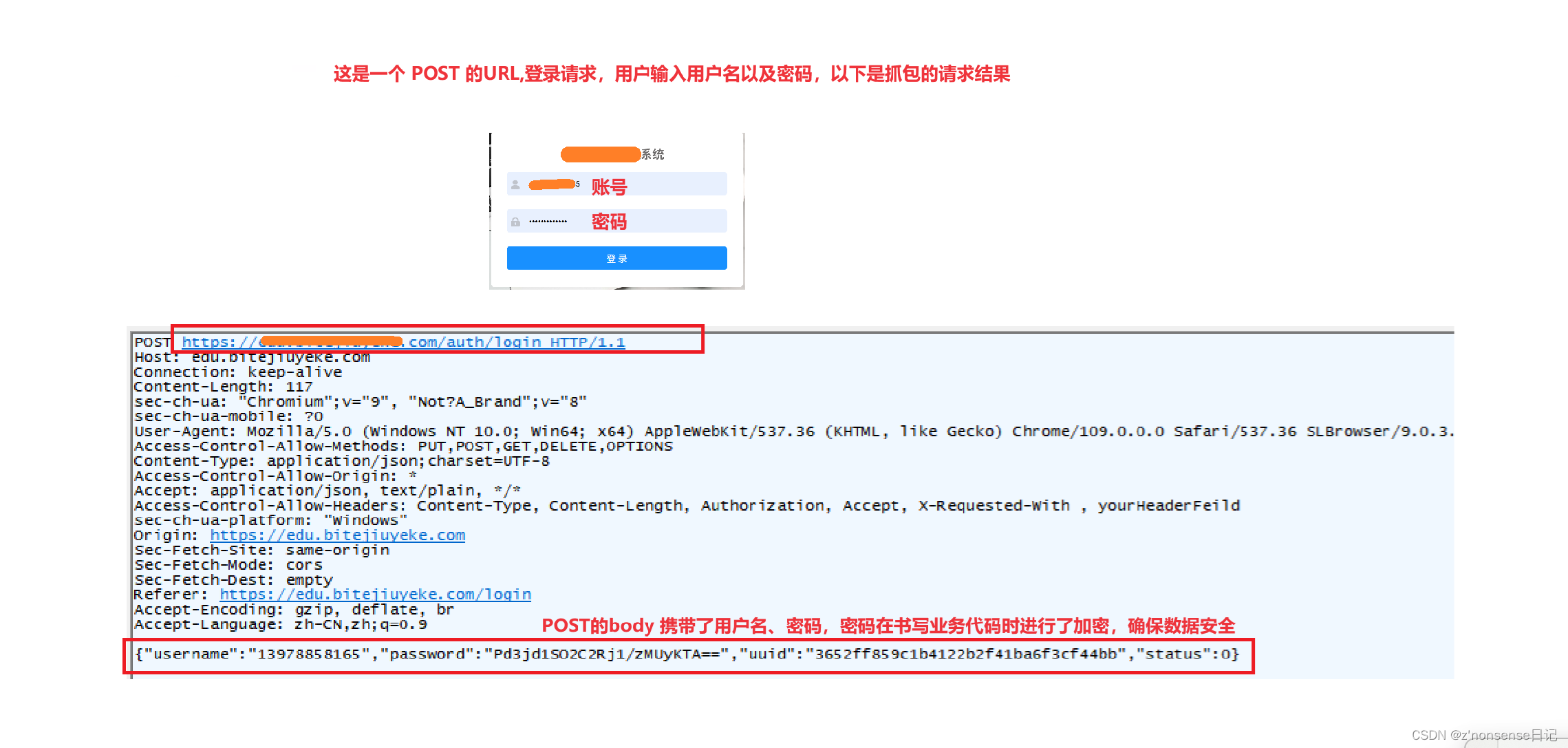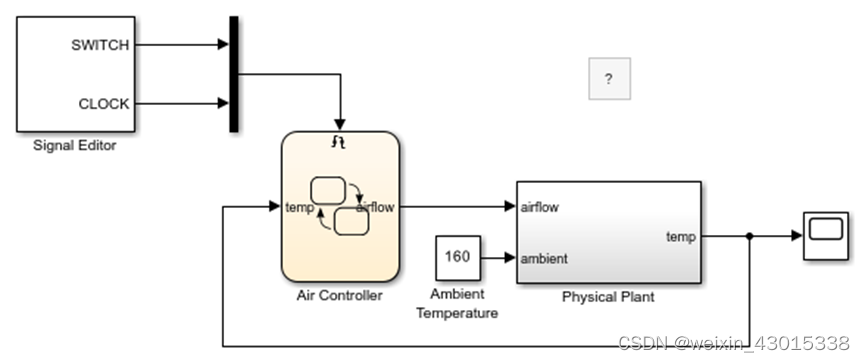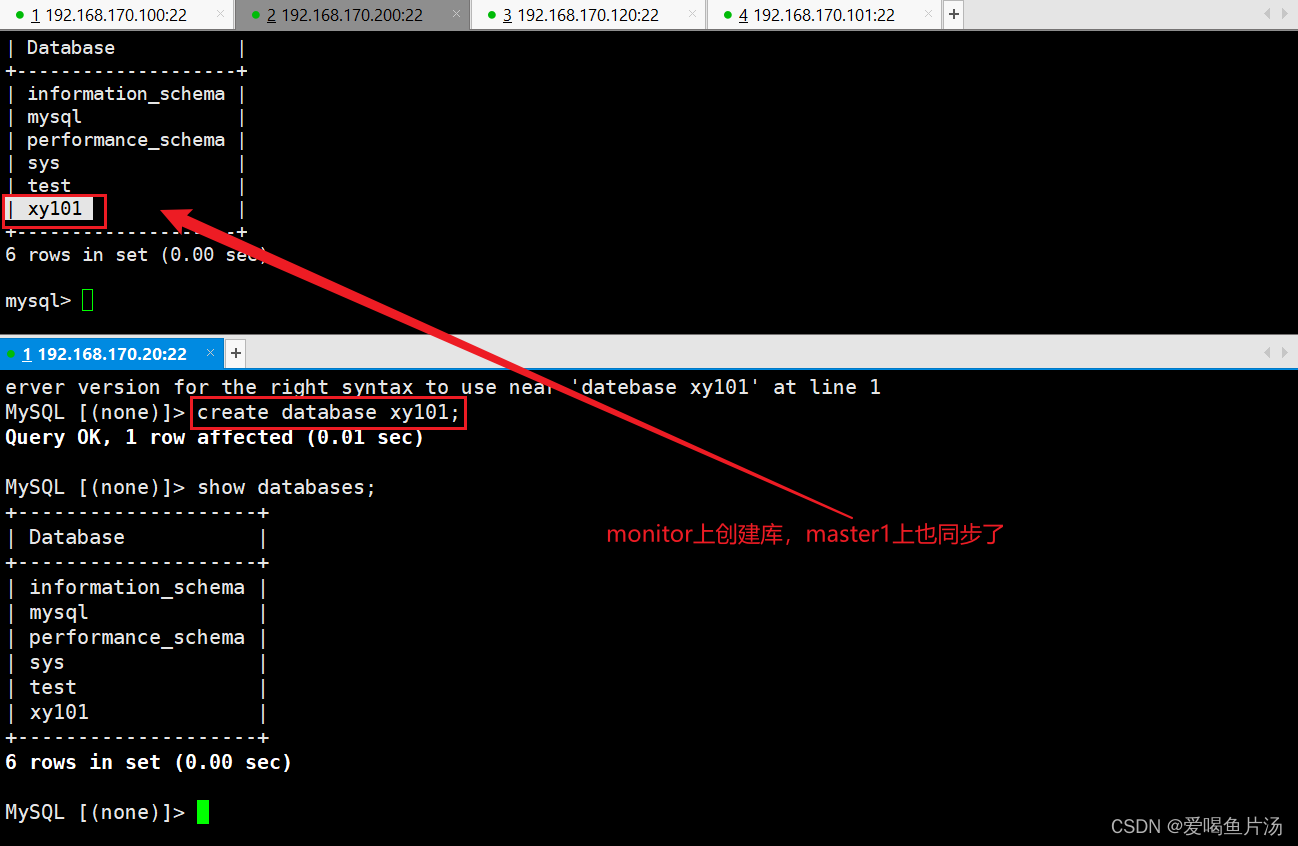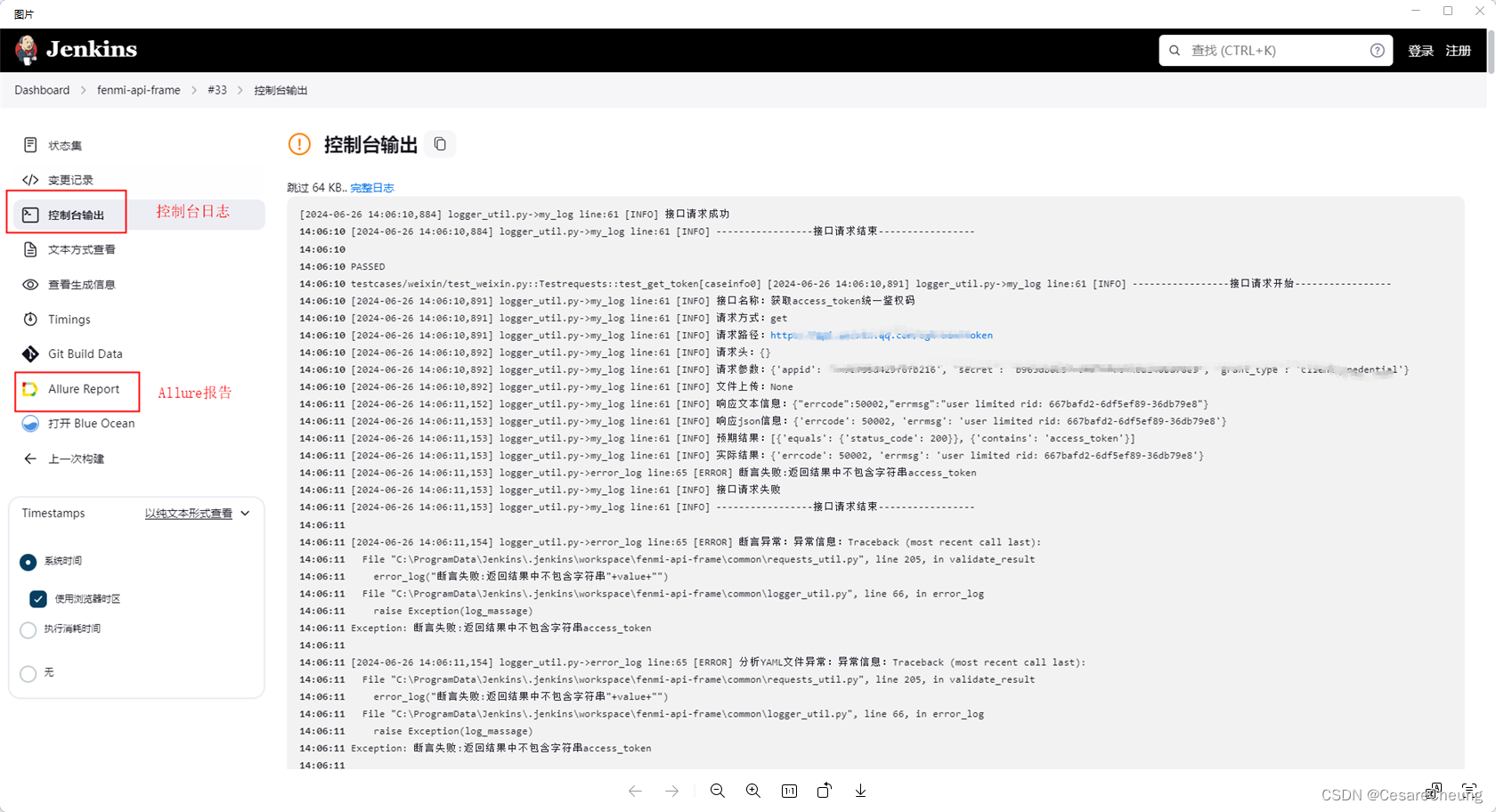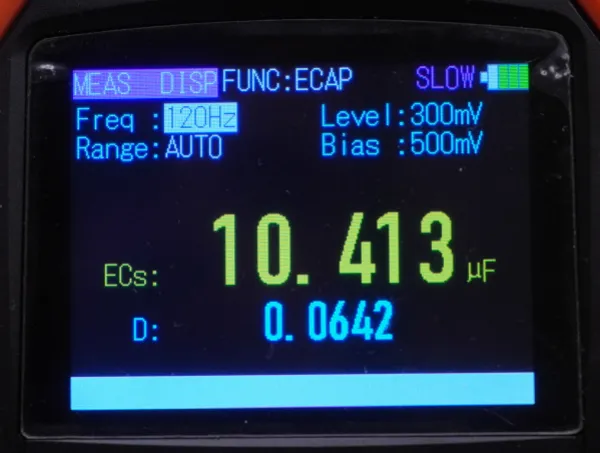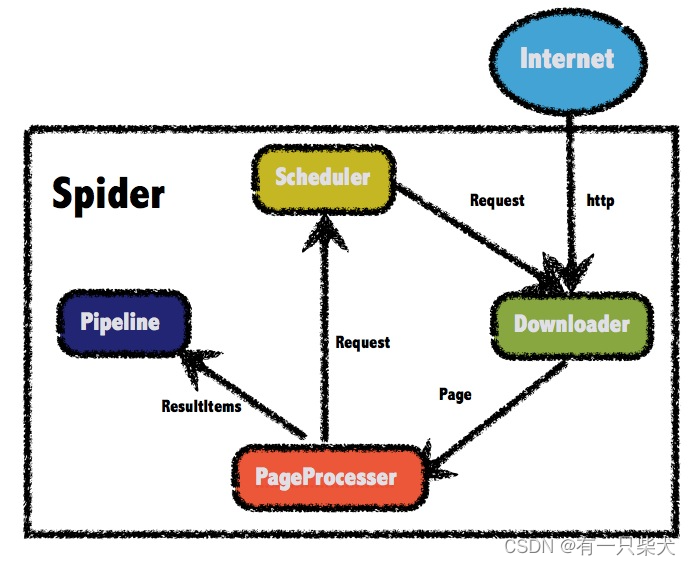简介
最近在看动手学深度学习这本书的注意力机制章节,理解起来很吃力,主要原因是一些底层api的具体执行不理解。
代码
unsqueeze

x=torch.ones((2, 1, 4))
y = torch.ones((2,4,6))
z = torch.bmm(x, y)
print(f"z.shpae: ", z.shape)
weights = torch.ones((2, 10)) * 0.1
values = torch.arange(20.0).reshape(2, 10)
print(f"weights: {weights}, values: {values}")
print(f"weights.shape: {weights.shape}, values.shape: {values.shape}")
t1 = weights.unsqueeze(1)
print(f"t1.shape: {t1.shape}, t1: {t1}")
print(f"values.dim: {values.dim()}")
t2 = values.unsqueeze(-1)
t3 = values.unsqueeze(2)
print(f"t2.shape: {t2.shape}, t2: {t2}")
print(f"t3.shape: {t3.shape}, t3: {t3}")
print(f"t2.dim: {t2.dim()}")
print(torch.bmm(weights.unsqueeze(1), values.unsqueeze(-1)))
输出
z.shpae: torch.Size([2, 1, 6])
weights: tensor([[0.1000, 0.1000, 0.1000, 0.1000, 0.1000, 0.1000, 0.1000, 0.1000, 0.1000,
0.1000],
[0.1000, 0.1000, 0.1000, 0.1000, 0.1000, 0.1000, 0.1000, 0.1000, 0.1000,
0.1000]]), values: tensor([[ 0., 1., 2., 3., 4., 5., 6., 7., 8., 9.],
[10., 11., 12., 13., 14., 15., 16., 17., 18., 19.]])
weights.shape: torch.Size([2, 10]), values.shape: torch.Size([2, 10])
t1.shape: torch.Size([2, 1, 10]), t1: tensor([[[0.1000, 0.1000, 0.1000, 0.1000, 0.1000, 0.1000, 0.1000, 0.1000,
0.1000, 0.1000]],
[[0.1000, 0.1000, 0.1000, 0.1000, 0.1000, 0.1000, 0.1000, 0.1000,
0.1000, 0.1000]]])
values.dim: 2
t2.shape: torch.Size([2, 10, 1]), t2: tensor([[[ 0.],
[ 1.],
[ 2.],
[ 3.],
[ 4.],
[ 5.],
[ 6.],
[ 7.],
[ 8.],
[ 9.]],
[[10.],
[11.],
[12.],
[13.],
[14.],
[15.],
[16.],
[17.],
[18.],
[19.]]])
t3.shape: torch.Size([2, 10, 1]), t3: tensor([[[ 0.],
[ 1.],
[ 2.],
[ 3.],
[ 4.],
[ 5.],
[ 6.],
[ 7.],
[ 8.],
[ 9.]],
[[10.],
[11.],
[12.],
[13.],
[14.],
[15.],
[16.],
[17.],
[18.],
[19.]]])
t2.dim: 3
tensor([[[ 4.5000]],
[[14.5000]]])
解释
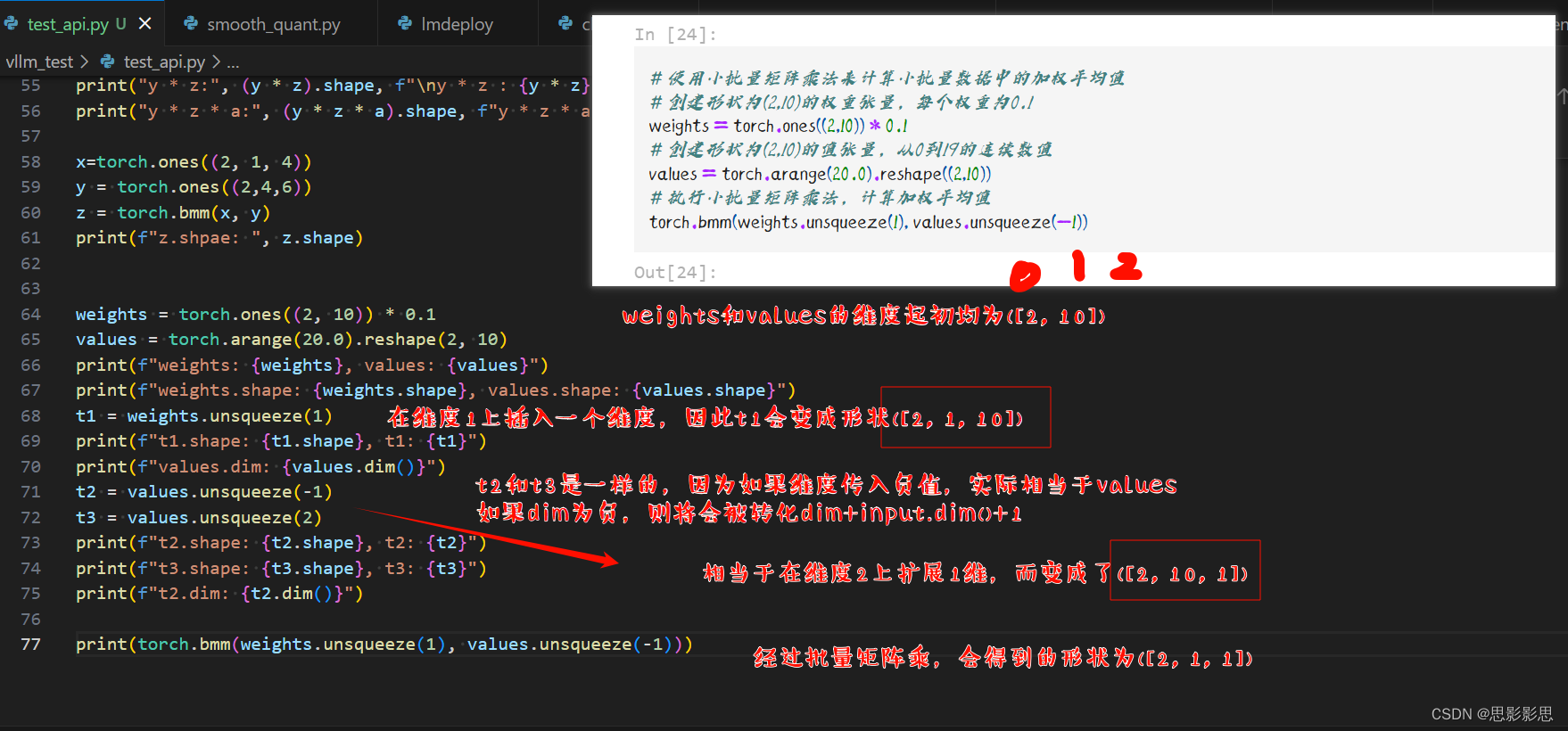
在 PyTorch 中,对张量进行unsqueeze操作时,dim的取值范围是(-input.dim() - 1, input.dim() + 1)(左闭右开)。
当dim为负数时,表示从后向前计数(即,dim == -1和dim == input.dim()等效)。负的dim值会被转化为dim + input.dim() + 1。
import torch
# 示例 1
a = torch.tensor([1, 2, 3, 4])
print(a.shape) # torch.Size([4])
b = torch.unsqueeze(a, 0)
print(b.shape) # torch.Size([1, 4]) # 在第 0 维(最前面)插入一维
c = torch.unsqueeze(a, 1)
print(c.shape) # torch.Size([4, 1]) # 在第 1 维(中间)插入一维
# 示例 2
d = torch.randn(2, 3)
print(d.shape) # torch.Size([2, 3])
e = torch.unsqueeze(d, 2)
print(e.shape) # torch.Size([2, 3, 1]) # 在第 2 维(最后面)插入一维
squeeze
在 PyTorch 中,torch.squeeze() 方法用于对张量的维度进行压缩,即去掉维数为 1 的维度。
其函数原型为:
torch.squeeze(input, dim=None, *, out=None) → Tensor
具体用法如下:
torch.squeeze(a):去掉张量 a 中所有维数为 1 的维度。
a.squeeze(N) 或 torch.squeeze(a, N):去掉张量 a 中指定的维数为 1 的维度 N。
需要注意的是,如果要删除的维度大小不是 1,则 squeeze() 方法不会删除该维度。
import torch
# 示例 1
a = torch.randn(1, 3, 1, 4)
print(a.shape) # torch.Size([1, 3, 1, 4])
b = torch.squeeze(a)
print(b.shape) # torch.Size([3, 4]) # 去掉所有维数为 1 的维度
# 示例 2
c = torch.randn(2, 1, 2, 1, 2)
print(c.shape) # torch.Size([2, 1, 2, 1, 2])
d = torch.squeeze(c, 1)
print(d.shape) # torch.Size([2, 2, 1, 2]) # 去掉维度为 1 的第二维
总结
机器学习的库,欠缺的比较多,还需要不断的积累才行。太痛苦了。


